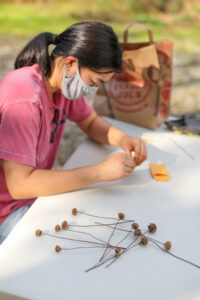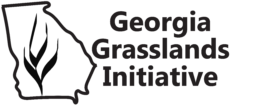Spending time in natural areas is important, especially for anyone at a young age who is interested in learning more about their surroundings and understanding the important impact of nature.
Animals use prairie grasses and wildflowers for cover to create a flourishing home underneath them. For example, Forbs drop basal leaves during flowering, which creates pathways and chambers on prairie floors for animals to scurry through.
 Bird identification is a great activity to draw kids into nature! By comparing birds’ sizes, color, behavior, and habitats, you can identify which type of bird you are seeing. After seeing them, you can snap a photo from a distance and reflect on them later. Where turkeys make loud, shrill calls that last for 1 second, quails make a three-syllable call that sounds like Chi-ca-go. Doves make coo-ing noises, and whip-o-wilds can sing or make a growl sound.
Bird identification is a great activity to draw kids into nature! By comparing birds’ sizes, color, behavior, and habitats, you can identify which type of bird you are seeing. After seeing them, you can snap a photo from a distance and reflect on them later. Where turkeys make loud, shrill calls that last for 1 second, quails make a three-syllable call that sounds like Chi-ca-go. Doves make coo-ing noises, and whip-o-wilds can sing or make a growl sound.
The best place to hear and see these birds are grasslands. When exploring grassland areas, wear close-toed shoes and make sure to shower at the end of the day. Watch out for chiggers and ticks, and bring water, a hat, a snack, and a walking stick!
Check out our Community Science page to find further resources to learn about the importance of grasslands in Georgia.
iNaturalist is a social app that allows users to share biodiversity, and spread the word about native plants of Georgia. This is a great way to engage people of all ages in appreciating and learning about biodiversity in Georgia. Biodiversity can be traced to different areas through mapping, which examines just how important plant life is.
Through educating children and teenagers about this, they may one day want to study Botany, Biology, or Entomology. Botany is the scientific study of plants, biology studies living things, and entomology is the study of insects. Ethnobotany is the specific study of a region’s plants, and the uses of those plants.
We want to help people see the plants in their daily lives. It doesn’t matter if you don’t know their name. Just go and see. What is outside? What do you see going down the side walk?
Did you know dandelions and clover and henbit that come up in the early spring are really important to native bees?
We can teach you the names of these wildflowers and grasses. Try using our iNaturalist project page. Take a photo and get names for what you are seeing.
Have you met the characters in the play that is a prairie? The characters are the wildflowers and grasses. Can you find them in the prairie? Come to the State Botanical Garden of Georgia and walk in our Piedmont Prairie.
Come see, explore, or just be up in here. What do you hear? What do you see up under the plants, down low?
Spy insects or birds and photograph them. We’ll help you identify them at least to family. You can send your photos to garden@uga.edu or our contact form.
Are you seeing turkeys, quail, dove, snipe, woodcocks? Are you hearing Whip-or-wils? Let us know at garden@uga.edu. You can also share your finds with eBird.
Want to learn more about Georgia birds, meet some birders outside.
http://www.oconeeriversaudubon.org/ and https://www.georgiaaudubon.org/
Additional Resources
Being in Nature is good for our minds, our mental health, our moods
If you want to learn native plants of Georgia and see special plant communities, join the Georgia Botanical Society for their presentations and hikes.
If you want to talk classes on native plants, check out the Certificate in Native Plants.
https://botgarden.uga.edu/education/adult-programs/
The Great Georgia Pollinator Census, every August
The Great Georgia Pollinator Census, every August
https://georgiawildlife.com/out-my-backdoor-archive
Out my Backdoor article series by Terry W. Johnson

